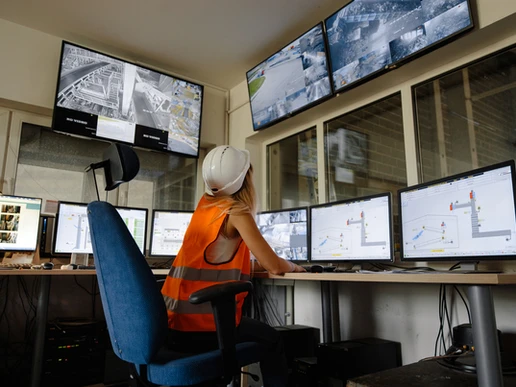What to do and what not to do when it comes to workforce management and team monitoring
Employee monitoring has emerged as a vital tool for any business wanting to increase productivity, ensure compliance, understand team performance, and streamline processes. However, there’s a balance when it comes to leveraging the advantages of monitoring while also maintaining a positive, productive work environment.
In this article, we’re diving into the do’s and don’ts of employee monitoring and workforce management.
What is employee monitoring exactly?
Employee monitoring refers to the observation and assessment of the processes, performance, and participation of people within a business. The intention is to enhance productivity, ensure a compliant workplace, safeguard sensitive info, and access data that can enable better processes overall.
Why implement employee monitoring?
You know what they say, you can’t fix what you don’t know is broken. This is especially true in work environments where there are a lot of different teams and departments.
By implementing employee monitoring, you gain a 360 view of operations, giving you clear, concise direction around necessary enhancements or adjustments in your business.
Ensure compliance and security
In industries with strict compliance rules and regulations, monitoring can help protect sensitive information from unauthorised access, and ensure safety and compliance protocols are adhered to.
Foster a sense of accountability among employees
When employees know they may be observed and may have their actions reviewed, it fosters a sense of accountability. Where monitoring is implemented responsibly and ethically, employees make more of an effort to understand expectations and tend to be more motivated to meet performance goals.
Effectively deploy and manage resources
With monitoring tools at your fingertips, you can access the data you need to properly deploy and manage your resources.
Contact Harald Chief Operating Officer, Kate Pullinger said one of the most obvious benefits of employee monitoring was the ability to reduce labour costs.
“Too often we see businesses spending exorbitant amounts of money on wages without seeing a true ROI,” Kate said.
“In a world where labour costs account for up to 70% of business spending, monitoring your team and implementing proper rostering, scheduling, and team management is essential to keeping costs down.
“Employee monitoring holds workers at all levels accountable for what gets done when they’re on the clock, and the majority of the time, more work gets done – for less cost to the business,” she said.

The dos and don’ts of employee monitoring
- Do use a monitoring system that is discreet and friendly to the demands of your work environment.
- Don’t use complicated, heavy, or clunky tech that inhibits your team from doing their jobs properly or impacts their morale.
- Do maintain data security and look for a system with privacy-preserving registration and data upload.
- Don’t implement a monitoring system that isn’t proven, tried and trusted by other businesses and industries.
- Do choose a system that integrates into your existing infrastructure – the last thing you want is to cause unnecessary work, set-up or excessive training.
- Don’t overlook the importance of clear policies. It’s important to avoid ambiguity when it comes to monitoring. Being clear about what is monitored, why and how, helps prevent misunderstandings and ensures consistent and transparent practices.
- Do get clear on your objectives and make use of available data and reports. The insights and analytics gained from monitoring are the key to creating positive change within your team and wider business.
- Don’t implement monitoring outside of working hours. This helps maintain a healthy work-life balance and is easy to adhere to when you are using a flexible workforce management system.
- Do conduct regular audits to ensure monitoring practices remain in full alignment with business goals, legal requirements and concerns.
- Do chat to the experts first. By seeking guidance, and advice from monitoring tech experts like Contact Harald, you’ll end up with a system that best suits your needs.
Employee monitoring – getting it right
Effective employee monitoring calls for a thoughtful, strategic and full-business approach.
By following the above dos and don’ts, employee monitoring tools provide valuable insight into performance, resource management and employee development.
They also have the power to uplevel business operations and reduce costs through higher efficiency.




